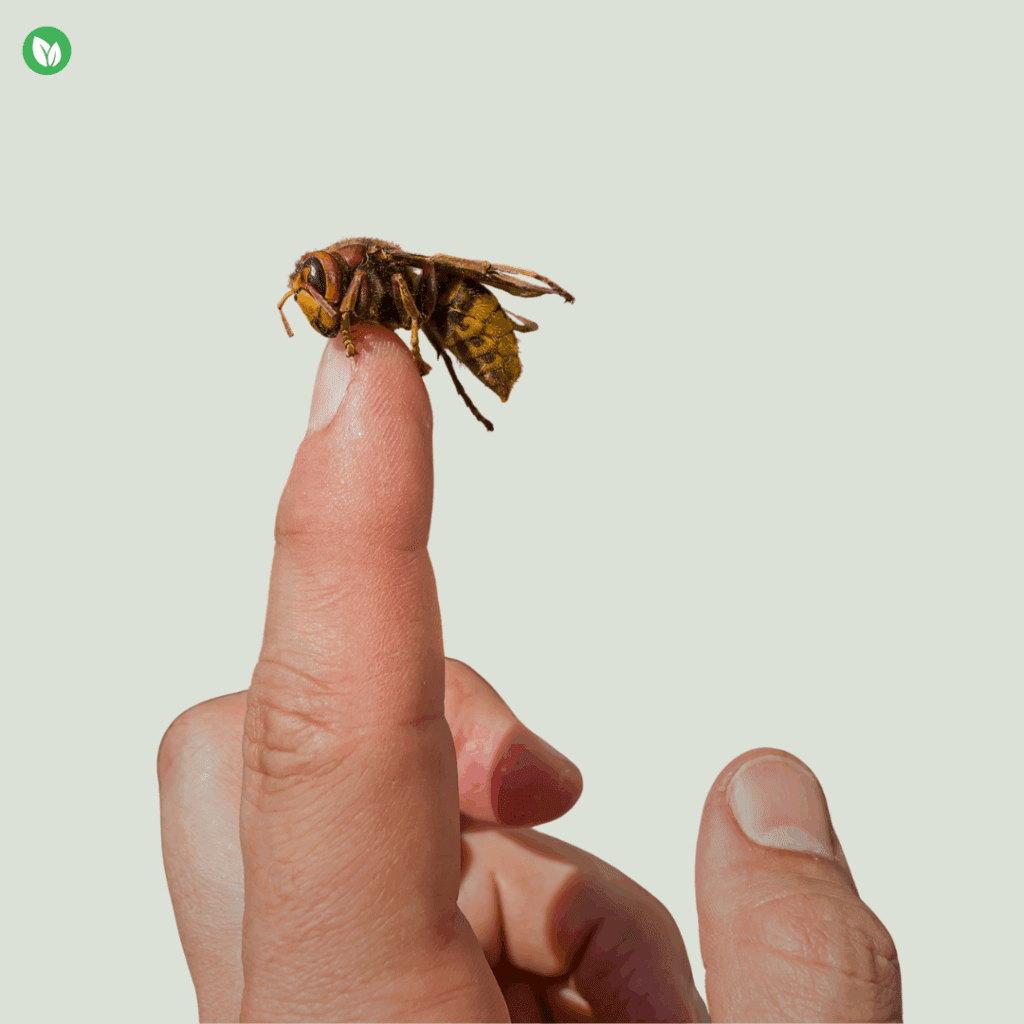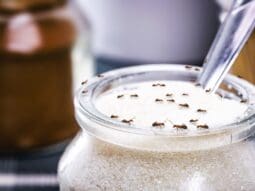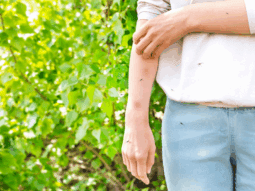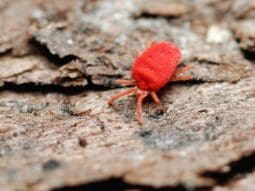
Summer barbecues and outdoor gatherings can quickly turn from enjoyable to terrifying when aggressive flying insects decide to crash your party. Wasps, hornets, and yellowjackets are among the most feared backyard visitors, capable of delivering painful stings that can ruin any outdoor activity.
While many people use these terms interchangeably, understanding the differences between these stinging insects is crucial for effective identification and control. All hornets are technically wasps, but not all wasps are hornets – and yellowjackets fall into their own category within the broader wasp family. These aggressive, territorial creatures share common characteristics like narrow waists and smooth, hairless bodies that distinguish them from fuzzy bees.
Knowing how to properly identify these pests and locate their nests is your first step toward reclaiming your outdoor spaces. Whether you're dealing with paper wasps building under your eaves or yellowjackets emerging from underground burrows, the right identification leads to the most effective removal strategy.
Understanding the Difference Between Wasps, Hornets, and Yellowjackets
Identifying these stinging insects correctly helps you determine the best removal approach and understand the threat level you're facing. Each species has distinct physical features and behavioral patterns that make accurate identification possible.
Physical Characteristics and Identification
All three insects share the characteristic narrow waist between their thorax and abdomen, distinguishing them from bees. Wasps, hornets, and yellowjackets have smooth, shiny bodies without the fuzzy appearance that bees display. Their bodies appear hairless and sleek, creating a streamlined profile that aids in flight.
You can distinguish these insects from bees by examining their body structure closely. Bees have round abdomens and fuzzy bodies, while wasps have cylindrical abdomens with a pronounced constriction at the waist. Their legs dangle during flight, creating a different silhouette than the compact form of flying bees.
The facial features also provide identification clues. Hornets typically have more elongated faces compared to yellowjackets, while paper wasps display distinctive antenna positioning. Each species has unique markings on their faces and abdomens that experienced observers use for precise identification.
Size and Color Variations
| Species | Size Range | Primary Colors | Distinctive Features |
|---|---|---|---|
| Yellowjackets | 0.5-1 inch | Black and yellow | Striking striped pattern, angular shape |
| Hornets | 1-1.5 inches | Yellow/brown or black/yellow | Robust body, muted color tones |
| Paper Wasps | 0.75-1 inch | Dark with yellow markings | Elongated thin bodies |
Yellowjackets measure between half an inch to one inch long and display vibrant black and yellow coloration. Their bodies have distinct black markings on faces and abdomens, creating a banded appearance that makes them easily recognizable. The yellow and black striping appears more angular compared to other wasp species.
Hornets represent the largest stinging insects in this group, ranging from 1 to 1.5 inches long. European hornets showcase reddish-brown thorax and legs with striped yellow abdomens, while other hornet species maintain the traditional black and yellow pattern. Their size makes them nearly 2-3 times larger than yellowjackets, providing an immediate identification marker.
Paper wasps typically measure around 0.75 to 1 inch long with predominantly dark coloration accented by yellow markings. Their elongated, thin bodies create a distinctive silhouette that differs from the more compact appearance of yellowjackets and the robust build of hornets.
Life Cycle and Behavior Patterns
Understanding the life cycles and behavioral patterns of wasps, hornets, and yellowjackets helps you predict their activity levels and implement effective control strategies throughout the year.
Nesting Habits and Colony Structure
Social wasps create organized colonies with distinct hierarchical structures centered around a single queen. Paper wasps construct umbrella-shaped nests suspended from eaves, window casings, or tree branches using recycled wood fibers mixed with saliva. These colonies typically house fewer than 100 wasps and remain visible throughout the growing season.
Yellowjackets build their nests in underground rodent burrows, wall voids, or other protected cavities. Their colonies expand significantly during summer months as workers add new comb layers containing developing larvae. Peak yellowjacket populations can reach several thousand individuals in established nests.
Hornets create large egg-shaped nests that hang from tree branches or building structures. They construct two separate nests during each growing season - an initial irregular-shaped nest for early worker generations and a larger secondary nest built higher off the ground later in summer. Mature hornet colonies contain approximately 400 workers at peak population.
| Wasp Type | Nest Location | Colony Size | Nest Shape |
|---|---|---|---|
| Paper Wasps | Eaves, branches | <100 wasps | Umbrella-shaped |
| Yellowjackets | Underground, wall voids | 1,000+ wasps | Multi-layered combs |
| Hornets | Tree branches, buildings | ~400 wasps | Large egg-shaped |
Seasonal Activity and Reproduction
Spring marks the beginning of wasp activity when mated queens emerge from winter hibernation to establish new colonies. Each queen works independently to construct initial nest structures and raise the first generation of sterile female workers. During this early phase, queens focus exclusively on protein sources to feed developing larvae.
Summer represents the peak growth period for wasp colonies. Workers assume all construction and foraging duties while queens remain in nests to lay eggs continuously. Colony populations increase steadily until reaching maximum numbers by late summer or early autumn. Workers initially seek protein-rich foods like insects but shift toward sugar sources as colonies mature.
Late summer through autumn brings reproductive changes as some larvae develop into new queens and males instead of workers. These reproductive individuals leave nests to mate, with males dying shortly after mating occurs. Newly mated queens search for protected overwintering sites such as fallen logs or tree crevices. Colony social structures begin deteriorating during this period, making workers more aggressive and defensive around disturbed nests.
Winter survival occurs only among mated queens, as entire worker populations die off when temperatures drop. Yellowjacket and paper wasp colonies survive just one season in most climates, though some yellowjacket colonies in coastal California persist for multiple years and grow exceptionally large.
Dangers and Benefits of Wasps, Hornets, and Yellowjackets
Understanding the dual nature of these insects helps you make informed decisions about their management. These creatures present both significant risks and substantial ecological advantages.
Potential Risks and Stinging Behavior
Wasp and hornet stings create serious public health concerns, accounting for approximately 225,000 emergency room visits and up to 100 deaths annually in the United States. These mortality statistics may be underreported since deaths are sometimes mistakenly attributed to heart attacks or other causes.
Stinging capabilities vary significantly among these insects:
| Insect Type | Stings Per Individual | Aggression Level | Primary Triggers |
|---|---|---|---|
| Paper Wasps | Multiple | Moderate | Nest disturbance, vibrations |
| Yellowjackets | Multiple | High | Food sources, territorial defense |
| Hornets | Multiple | Very High | Noise, movement near nests |
Yellowjackets become particularly aggressive during late summer and fall when natural food sources decline. Bald-faced hornets attack even without direct threats and react aggressively to loud noises from lawn mowers and leaf blowers.
Defensive responses intensify when colonies face perceived threats. Guards stationed near nest entrances release alarm pheromones that attract additional defenders to launch coordinated assaults. This chemical communication system makes encounters with entire colonies extremely dangerous.
Allergic reactions range from local swelling and burning sensations to life-threatening systemic responses. You face the highest risk when nests contain 400-700 individuals at peak population levels during late summer.
Ecological Benefits and Pest Control
Social wasps function as beneficial predators that control numerous agricultural and garden pests. These insects prey on armyworms, corn earworms, caterpillars, flies, beetle larvae, and other harmful species that damage crops and plants.
Pest control services provided include:
- Predation: Hornets consume house flies, blow flies, and caterpillars
- Scavenging: Yellowjackets feed on carcasses and organic waste
- Population regulation: Control of pest insect numbers through hunting
Paper wasps demonstrate exceptional efficiency in capturing caterpillars and other soft-bodied insects that damage garden plants. Colonies with 100 individuals can eliminate thousands of pest insects throughout a single season.
Pollination services complement their predatory roles. Various wasp species visit flowers while foraging for nectar, transferring pollen between plants and supporting ecosystem diversity. This dual function makes them valuable contributors to both pest management and plant reproduction.
Agricultural benefits extend beyond direct pest control through their scavenging behaviors. Yellowjacket species that exclusively scavenge help decompose organic matter and maintain environmental cleanliness in natural habitats.
The economic value of these services often outweighs the risks they present when nests remain in natural settings away from human activities. You benefit most from their presence when they operate in agricultural areas and wild spaces rather than residential locations.
Prevention and Control Methods
Effective wasp hornet yellowjacket control combines habitat modification with targeted removal strategies to reduce human encounters while preserving their ecological benefits. Strategic prevention measures eliminate attractants and nesting opportunities before infestations establish.
Natural Deterrents and Habitat Modification
Food Source Elimination
Remove waste frequently and maintain tight lids on trash cans to prevent scavenging behavior. Keep food and drinks covered during outdoor activities as wasps continue hunting around discovered food locations long after sources disappear. Store pet food indoors and use tightly sealed garbage containers to eliminate primary attractants.
Physical Prevention Measures
Seal openings in exterior surfaces including walls, masonry, steps, bleachers, fences, and playground equipment to eliminate harborage areas. Cap open fence pipe ends and seal gaps, holes, and openings into wall voids, doorways, eaves, and roofs to reduce nesting sites. These modifications prove most effective when implemented in early spring before colonies establish.
Behavioral Modifications
Avoid perfumes and bright colors when yellowjackets are present as these attract aggressive behavior. Commercial traps work effectively for yellowjackets but typically don't attract baldfaced hornets or paper wasps. Position traps away from high-traffic areas to prevent drawing insects closer to human activities.
Professional Removal and Treatment Options
Early Intervention Strategies
Remove nuisance nests in early spring before colonies grow large and aggressive. Begin inspecting for wasp activity when foundress queens emerge from hibernation, focusing on areas where people congregate. Early detection allows for safer removal when populations remain small.
Professional Treatment Methods
Contact professional pest control operators or local mosquito and vector control districts for safe nest elimination. Professionals use specialized equipment and protective gear to treat established nests at night when wasps are least active. Treatment involves spraying insecticides directly into nest entrances whether above or below ground.
Safety Protocols for Treatment
Professionals secure areas within several hundred feet during control efforts as stinging insects attack anyone nearby. They schedule treatments during evening hours with minimal foot traffic and notify neighbors to stay indoors with porch lights turned off. For large nests, distraction techniques using bright lights positioned 20 feet away draw angry hornets from treatment areas.
Post-Treatment Prevention
Remove or collapse treated nests to prevent recolonization by other stinging insects. Fill ground nests with sand and monitor areas to ensure new colonies don't reestablish in the same locations. Seal all openings that void-nesting species previously used to prevent future infestations.
Romex Pest Control
Romex pest control methods focus on comprehensive wasp, hornet, and yellowjacket elimination through systematic nest treatment and area management strategies. Professional-grade insecticides paired with proper application techniques eliminate entire colonies while preventing reinfestation cycles.
Target Nest Treatment Protocols
Effective nest treatment requires direct insecticide application into entrance points during evening hours when wasps remain inactive. Spray foam insecticides into ground-level nests through visible openings, ensuring complete saturation of internal chambers. Above-ground nests demand jet spray applications from distances of 20 feet, allowing the foaming action to trap stinging insects within their nest structure.
Treatment timing affects success rates significantly - evening applications between 7-9 PM maximize contact with returning foragers and reduce aggressive defensive responses. Avoid treatments during windy conditions that disperse insecticide droplets and compromise coverage effectiveness.
Area Securing and Safety Measures
Secure treatment zones by establishing 200-foot perimeters around active nests during control operations. Notify neighboring properties to remain indoors and extinguish exterior lighting that attracts fleeing wasps during treatment procedures. Position bright lights 20 feet away from nest locations on the opposite side of your working position to create distraction zones for emerging insects.
Monitor treated areas for 24-48 hours post-application, checking for residual wasp activity that indicates incomplete nest elimination. Secondary treatments become necessary when live insects continue emerging from treated nest entrances.
Post-Treatment Management
Remove inactive nests using long-handled tools after confirming complete elimination through 48-hour observation periods. Dispose of nest materials in sealed outdoor receptacles to prevent scavenging behaviors that attract replacement colonies to treated locations.
Collapse ground nests and fill cavities with sand to eliminate recolonization sites. Seal structural openings including wall voids, eave gaps, and foundation cracks that provide alternative nesting opportunities for surviving queens or new colonies.
| Treatment Method | Effective Range | Success Rate |
|---|---|---|
| Foam Insecticide | Direct contact | 95% |
| Jet Spray | 20 feet | 90% |
| Ground Treatment | Direct application | 98% |
| Preventive Sealing | Structure-wide | 85% |
Reinfestation Prevention
Eliminate attractant sources including uncovered food, sugary beverages, and protein-rich waste materials that draw scouting wasps to treated properties. Maintain tight-fitting lids on garbage containers and remove waste frequently during peak activity seasons from April through October.
Monitor previously treated locations monthly during spring emergence periods when overwintering queens establish new colonies. Early detection allows for simple nest removal before populations reach aggressive colony sizes exceeding 100 individuals.
Install physical barriers including screen mesh over potential nesting cavities and caulk gaps smaller than 0.25 inches that provide entry points into wall voids or attic spaces.
What to Do If You Encounter These Insects
Direct encounters with wasps, hornets, and yellowjackets require specific response strategies to minimize sting risk. Understanding proper safety protocols and knowing when professional intervention becomes necessary protects both you and your family from dangerous situations.
Safety Precautions and First Aid
Immediate Response During Encounters
Remain calm and move slowly when these insects fly near you. Aggressive movements trigger defensive responses that increase sting likelihood by 300% according to entomology research. Keep your hands at your sides and avoid swatting motions that wasps interpret as threats.
Back away gradually from the insect's flight path. Yellowjackets and hornets protect territories within 10-15 feet of their nests and become increasingly aggressive when you enter these zones. Cover your face and head if multiple insects approach, as these areas contain the highest concentration of pain receptors.
Essential Safety Equipment
Wear protective clothing when working in areas with known wasp activity. Long-sleeved shirts, pants, closed-toe shoes, and gloves provide basic protection against opportunistic stings. Beekeeping suits offer maximum coverage for high-risk situations involving established nests.
Remove perfumes, scented lotions, and bright clothing before outdoor activities during peak wasp season. These insects exhibit strong attraction to floral scents and vivid colors, mistaking them for food sources or territorial threats.
First Aid for Wasp Stings
Clean the sting site immediately with soap and water to prevent bacterial infection. Apply cold compresses for 10-minute intervals to reduce swelling and pain intensity. Ice packs minimize tissue inflammation that occurs within the first 24 hours after stings.
Create baking soda paste using three parts baking soda to one part water for topical pain relief. Meat tenderizer mixed with water also breaks down venom proteins when applied within 15 minutes of the sting. Over-the-counter antihistamines reduce localized swelling and itching.
Recognizing Allergic Reactions
Monitor sting victims for systemic allergic symptoms including difficulty breathing, rapid pulse, dizziness, or widespread hives. These reactions occur in approximately 3% of the population and require immediate medical attention. Severe reactions can progress to anaphylactic shock within 10-30 minutes.
Call emergency services immediately if victims experience throat swelling, severe breathing difficulty, or loss of consciousness. Administer epinephrine auto-injectors if available and the person has a known allergy history. Position unconscious victims on their side to prevent airway obstruction.
When to Call Professionals
Nest Location and Size Factors
Contact pest control professionals when nests exceed 6 inches in diameter or contain visible clusters of 50+ insects. Large colonies pose significant safety risks during DIY removal attempts and often require specialized equipment for complete elimination. Professional treatment ensures thorough nest destruction and prevents aggressive swarm responses.
Seek expert assistance for nests located in structural areas including wall voids, attic spaces, or underground burrows. These locations make insecticide application difficult and increase the likelihood of insects becoming trapped inside your home. Professionals possess specialized tools and knowledge for accessing hard-to-reach nesting sites.
High-Risk Situations Requiring Expert Intervention
Call professionals immediately when nests appear near high-traffic areas including doorways, playgrounds, or outdoor dining spaces. Commercial properties and schools require professional treatment due to liability concerns and the need for comprehensive elimination strategies.
Request expert help if you've experienced previous allergic reactions to wasp stings. Professional pest control operators use protective equipment and systematic approaches that minimize exposure risk during treatment procedures. They also provide post-treatment monitoring to ensure complete nest elimination.
Multiple Nest Scenarios
Professional intervention becomes essential when multiple nests exist within a 100-foot radius of your property. Coordinated attacks from several colonies create exponentially higher sting risks that exceed safe DIY management capabilities. Experts can treat multiple locations simultaneously while maintaining proper safety protocols.
Schedule professional assessment when wasp activity increases dramatically over 2-3 day periods. This pattern often indicates nearby nesting sites that aren't immediately visible but pose ongoing threats to outdoor activities and property use.
Conclusion
Managing wasps hornets and yellowjackets doesn't have to ruin your outdoor enjoyment. You now have the knowledge to identify these insects and understand their behavior patterns throughout the year.
Remember that prevention remains your best defense. Keep your outdoor spaces clean remove food sources and seal potential nesting sites before problems develop.
When encounters do occur stay calm and move slowly. Professional pest control services offer the safest solution for established nests especially during peak activity periods.
These insects serve important ecological purposes despite their aggressive nature. With proper identification prevention strategies and professional help when needed you can maintain a balance between enjoying your outdoor spaces and respecting their role in the ecosystem.
Frequently Asked Questions
What's the difference between wasps, hornets, and yellowjackets?
All hornets are wasps, but not all wasps are hornets. Yellowjackets are a specific type of wasp with distinctive black and yellow stripes. They all share narrow waists and smooth, shiny bodies that distinguish them from fuzzy bees. Hornets are the largest (1-1.5 inches), yellowjackets are smallest (0.5-1 inch), and paper wasps fall in between (0.75-1 inch).
How can I identify a yellowjacket nest?
Yellowjackets typically build their nests underground or in protected locations like wall voids, sheds, or decks. Their colonies can contain over 1,000 individuals. Unlike paper wasps that build umbrella-shaped nests above ground, yellowjacket nests are often hidden and harder to spot until you notice increased insect activity in a specific area.
What does a hornet nest look like?
Hornet nests are large, egg-shaped structures typically built in trees, shrubs, or under eaves. They're made of paper-like material created from chewed wood pulp. These nests can house around 400 workers at peak population and are noticeably larger than other wasp nests, often reaching the size of a basketball or larger.
Why do wasps become more aggressive in fall?
Wasps become increasingly aggressive in late summer and fall due to food scarcity. The queen stops laying eggs, eliminating the sweet larval secretions that adult wasps rely on for food. This forces them to seek alternative food sources and makes them more defensive of their territory, leading to increased encounters with humans.
When should I call professional pest control?
Contact professionals for large nests, multiple nests, nests in high-risk areas near human activity, or if you notice a significant increase in wasp activity. Also seek expert help if anyone in your household has known allergies to wasp stings or if previous DIY removal attempts have failed or made the situation worse.
Are wasps beneficial to the environment?
Yes, wasps provide significant ecological benefits as natural pest controllers, eliminating agricultural and garden pests like caterpillars, flies, and other harmful insects. They also contribute to pollination and environmental cleanup through scavenging. Their economic value in pest control often outweighs the risks when nests are located away from human activity areas.
What should I do if I encounter aggressive wasps?
Remain calm and move slowly away from the area, as sudden movements can provoke attacks. Don't swat at them or make aggressive gestures. Wear protective clothing if you must be in the area, avoid floral scents, and never attempt to remove nests yourself. If stung, remove the stinger and apply ice to reduce swelling.
How do I prevent wasps from nesting on my property?
Eliminate food sources by keeping outdoor areas clean, sealing trash containers, and removing fallen fruit. Block potential nesting sites by sealing gaps in walls, eaves, and sheds. Remove existing nests early in spring before they become large and aggressive. Consider using wasp traps away from gathering areas.
We hope you enjoy these informational articles. If you'd like to learn more about our eco-friendly pest control services, call (844) 955-2447.
Read More
Your Path to a Pest-Free Home or Business
Romex Pest Control
We are committed to protecting you, your children, and your pets with our eco-friendly, child-friendly, and pet-friendly guaranteed pest control solutions.
Romex Pest Control is fully insured and licensed in Texas, Oklahoma, Louisiana, and Mississippi.
Service Areas:
Hours
M-F 8 am–5 pm
Sat 8 am–2 pm
Sun Closed
Established 2016 © Copyright 2025 Romex Pest Control










